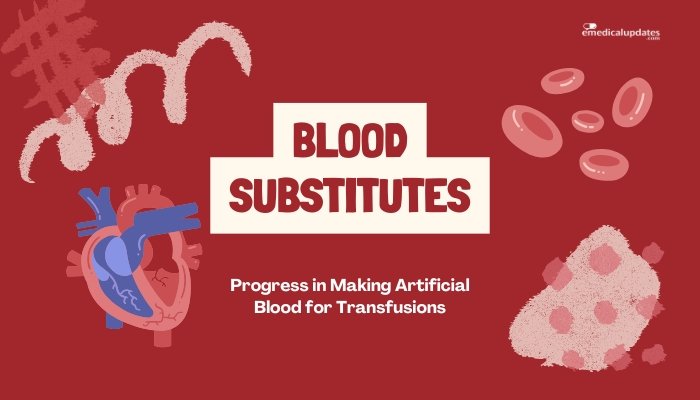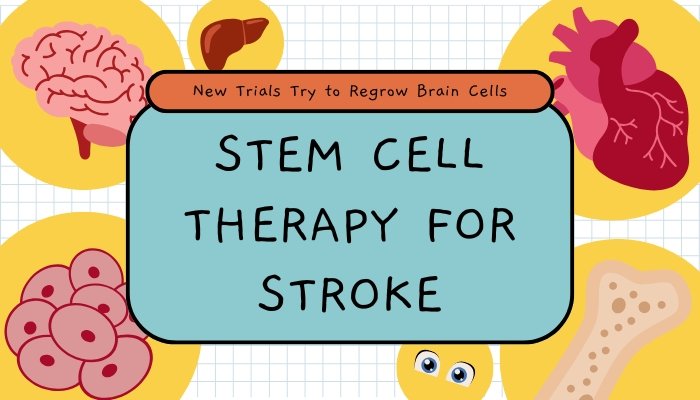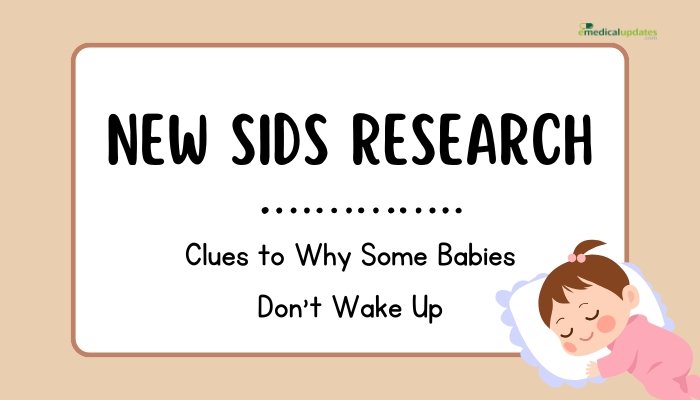Introduction
Blood transfusions save lives daily, whether in trauma centers, operating rooms, or for chronic anemia. Yet, reliance on donated human blood comes with limitations—short supply, risk of contamination, and the logistical challenges of matching blood types.
In response, researchers are striving to create blood substitutes (often termed “artificial blood” or oxygen therapeutics) to meet emergency demands, reduce infection risks, and ensure broader availability in crisis settings. This article explores the types of blood substitutes, their current status, and the challenges before they become a mainstream alternative.
Why Develop Artificial Blood?
Supply and Demand
- Blood Shortages: Seasonal fluctuations or disasters can strain blood banks.
- Global Disparities: Many low-resource areas lack reliable donor supply and testing capacity.
- Storage Limitations: Red blood cells typically have a shelf life of 42 days; platelets last even less, and freezing or specialized shipping can be costly.
Risks of Donated Blood
Despite rigorous screening, donated blood still carries minimal but real risks:
- Transfusion-Transmitted Infections: HIV, hepatitis, emerging pathogens—though quite rare in modern systems.
- Immunologic Reactions: Mismatched or minor antigens can cause transfusion-related complications.
A universal, safe oxygen-carrying fluid free of these constraints would drastically improve emergency and battlefield care.
Types of Blood Substitutes
Hemoglobin-Based Oxygen Carriers (HBOCs)
The most common approach harnesses hemoglobin, the molecule in red blood cells that carries oxygen. However, once removed from RBC membranes, hemoglobin can:
- Cause Toxic Effects: Free hemoglobin can harm kidneys and trigger oxidative damage.
- Need Stabilization: HBOCs are often chemically modified or encapsulated in ways to reduce toxicity and extend circulation time.
Perfluorocarbon (PFC) Emulsions
Perfluorocarbons dissolve large amounts of oxygen and carbon dioxide:
- Properties: They’re synthetic, inert liquids carrying oxygen once mixed with oxygen-rich gas.
- Clinical Utility: Typically used in partial liquid ventilation or specialized scenarios. Some older versions had side effects like flu-like reactions and require supplemental oxygen.
Synthetic RBCs / Cell-Like Structures
Emerging work focuses on nano- or microstructures that mimic red blood cells:
- Biocompatible Polymers: Some labs create RBC-shaped polymer shells loaded with hemoglobin or PFC, aiming for stable, long-lasting oxygen release.
- Potential for Targeted Delivery: In principle, these could incorporate additional functions—like delivering drugs or helping with carbon monoxide detox.
Key Advances in Research and Trials
Modern HBOCs
Earlier HBOCs faced issues like hypertension or organ damage. Newer generations refine chemical modifications to:
- Reduce Vasoactivity: Minimizing spikes in blood pressure and potential vasoconstriction.
- Extend Circulation Half-Life: By crosslinking or polymerizing hemoglobin molecules, scientists keep them from breaking down too quickly.
Clinical Trials and Lessons Learned
Some RBC substitutes advanced to Phase II/III but encountered safety concerns—like elevated rates of heart attacks—leading to halted or modified trials. Recent smaller-scale studies show improved formulations might mitigate these complications.
Emergency Use Cases
Select armed forces or remote clinics tested early blood substitute prototypes in emergent hemorrhagic shock contexts. Reports highlight potential benefits when real blood is unavailable, though consistent data for safety and efficacy remains essential for broad regulatory approval.
Advantages and Potential Uses
- Universal Compatibility: Synthetic substitutes typically bypass ABO or Rh blood type constraints, reducing matching complexities.
- Longer Shelf Life: Some HBOCs can store at room temperature for months, ideal for remote clinics or battlefield supply lines.
- Rapid Availability: Eliminates the need for crossmatching or extensive lab tests in emergencies.
Challenges and Considerations
Safety Concerns
- Oxidative Stress: Freed or modified hemoglobin can degrade into harmful byproducts if not well contained.
- Cardiovascular Effects: Some older HBOCs induced coronary vasospasm or myocardial infarction.
- Immunologic Reactions: Synthetic RBC coatings might cause unforeseen immune system responses.
Cost and Manufacturing
Scaling production of stable, clinically approved blood substitutes remains expensive. Sourcing large amounts of purified hemoglobin or advanced polymer shells demands specialized tech and robust quality assurance.
Efficacy vs. RBCs
No product fully replicates RBC functionalities—oxygen transport is one part, but RBCs also facilitate carbon dioxide removal, acid-base balance, and more. Substitutes might serve well in acute stabilization but not necessarily replace full RBC therapy in all scenarios.
Future Outlook
Next-Gen Formulations
Startups and research labs refine carriers, exploring gene engineering (e.g., hyper-stable hemoglobin variants), improved PFC emulsions, or RBC-like nanomaterials. The goal: a product that stably carries oxygen, remains in circulation for days, and poses minimal toxicity.
Targeted Indications
Blood substitutes may first gain traction in:
- Trauma Care: On the battlefield or remote sites, bridging patients to the hospital.
- Mass Casualty Events: Earthquakes or disasters with limited blood supply.
- Specific Surgeries or Procedures: E.g., those requiring short-term volume expansion with oxygen-carrying capacity.
Regulatory Progress
Agencies worldwide demand extensive proof of safety and real-world benefits. Achieving mainstream acceptance might require robust Phase III data showing improved survival or outcomes in large cohorts.
Frequently Asked Questions
- Can artificial blood fully replace donated human blood?
- Not yet. Current substitutes primarily deliver oxygen but lack other RBC functions like clotting factors or immune cells, so they’re partial solutions, not total replacements.
- Are there any substitutes already on the market?
- A few HBOC products have been approved for limited use in certain countries, but none widely accepted for routine use in major markets like the U.S. due to safety concerns.
- Could artificial blood remove infection risks entirely?
- Potentially, yes. Since these solutions aren’t derived from human donors, they may avoid bloodborne pathogens. However, manufacturing must maintain sterility.
- What about religious or ethical concerns?
- Some patients (e.g., Jehovah’s Witnesses) might accept a synthetic oxygen carrier as it’s not human-derived. Ethically, it’s less contentious than using real blood.
- How soon until we see common usage?
- Despite decades of research, large-scale adoption remains a few years away as developers tackle safety, efficacy, and cost hurdles.
Conclusion
Blood substitutes represent a promising frontier in emergency medicine and beyond, offering a universal, infection-free option to deliver oxygen when donor blood isn’t available or appropriate. Although early prototypes faced setbacks—like elevated cardiovascular risks—new formulations exhibit greater biocompatibility and stability, edging closer to real-world viability. If ongoing trials confirm safety and efficacy, these products could revolutionize trauma care, enable surgeries in remote environments, and reduce reliance on donated blood supplies.
Yet the path remains complex: capturing all RBC roles (oxygen transport, carbon dioxide removal, and more) is no easy feat, and broad acceptance will demand robust evidence of life-saving benefits. Nonetheless, with each technological refinement, the dream of a dependable, shelf-stable, and universal “artificial blood” moves one step closer to clinical reality.
References
-
Chang T. (2017). “Blood substitutes: from concept to clinical trials.” Biomaterials.
-
HBOC Collaborative. (2020). “Modern hemoglobin-based oxygen carrier developments.” Transfusion.
-
Moore E. (2022). “Trauma applications for oxygen therapeutics.” J Trauma Acute Care Surg.
-
US FDA (2023). “Guidance on evaluation of hemoglobin-based oxygen carriers.”






